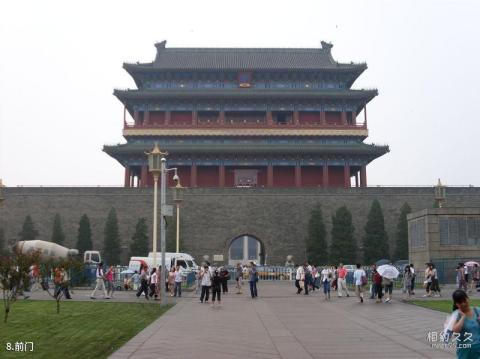
Introduction to Qianmen: Zhengyang Gate, commonly known as "Qianmen", is the south gate of the inner city of Beijing during the Ming and Qing Dynasties. This gate was originally called "Lizheng Gate" and was built in the 17th year of Yongle in the Ming Dynasty (1419). In the fourth year (1439), it was renamed "Zhengyangmen".
Zhengyang Gate is composed of a city tower, an arrow tower, and an urn city. The city floor is seven rooms wide, with gray tube tiles and green glazed tiles trimmed on the top of the hill. The red beams are decorated with golden flowers and colorful clouds. The triple eaves and double pavilions are 40.36 meters high. With a width of 41 meters and a depth of 21 meters, it is a typical city defense building in China and the most majestic among the city gates. After Zhengyangmen was built, it was repeatedly destroyed by wars. In 1900, when the Eight-Power Allied Forces invaded Beijing, Zhengyangmen was destroyed by artillery bombardment. It was rebuilt in 1906 with reference to the regulations of Chongwen and Xuanwu gates, and is now open to the public as a national key cultural relic protection unit.
